As an output plot of the non-linear regression analysis from this link
https://stats.stackexchange.com/questions/209087/non-linear-regression-mixed-model
With this dataset:
zz <-(" iso temp diam
Itiquira 22 5.0
Itiquira 22 4.7
Itiquira 22 5.4
Itiquira 25 5.8
Itiquira 25 5.4
Itiquira 25 5.0
Itiquira 28 4.9
Itiquira 28 5.2
Itiquira 28 5.2
Itiquira 31 4.2
Itiquira 31 4.0
Itiquira 31 4.1
Londrina 22 4.5
Londrina 22 5.0
Londrina 22 4.4
Londrina 25 5.0
Londrina 25 5.5
Londrina 25 5.3
Londrina 28 4.6
Londrina 28 4.3
Londrina 28 4.9
Londrina 31 4.4
Londrina 31 4.1
Londrina 31 4.4
Sinop 22 4.5
Sinop 22 5.2
Sinop 22 4.6
Sinop 25 5.7
Sinop 25 5.9
Sinop 25 5.8
Sinop 28 6.0
Sinop 28 5.5
Sinop 28 5.8
Sinop 31 4.5
Sinop 31 4.6
Sinop 31 4.3"
)
df <- read.table(text=zz, header = TRUE)
And this fitted model, whit four parameters:
thx: Optimum temperature
thy: Diameter at optimum
thq: Curvature
thc: Skewness
library(nlme)
df <- groupedData(diam ~ temp | iso, data = df, order = FALSE)
n0 <- nlsList(diam ~ thy * exp(thq * (temp - thx)^2 + thc * (temp - thx)^3),
data = df,
start = c(thy = 5.5, thq = -0.01, thx = 25, thc = -0.001))
> n0
# Call:
# Model: diam ~ thy * exp(thq * (temp - thx)^2 + thc * (temp - thx)^3) | iso
# Coefficients:
thy thq thx thc
# Itiquira 5.403118 -0.007258245 25.28318 -0.0002075323
# Londrina 5.298662 -0.018291649 24.40439 0.0020454476
# Sinop 5.949080 -0.012501783 26.44975 -0.0002945292
# Degrees of freedom: 36 total; 24 residual
# Residual standard error: 0.2661453
Is there a way to plot the fitted values in ggplot, like an specific function of smooth()?
I think I found it...(based on http://rforbiochemists.blogspot.com.br/2015/06/plotting-two-enzyme-plots-with-ggplot.html)
ip <- ggplot(data=daf, aes(x=temp, y=diam, colour = iso)) +
geom_point() + facet_wrap(~iso)
ip + geom_smooth(method = "nls",
method.args = list(formula = y ~ thy * exp(thq * (x-thx)^2 + thc * (x - thx)^3),
start = list(thy=5.4, thq=-0.01, thx=25, thc=0.0008)),
se = F, size = 0.5, data = subset(daf, iso=="Itiquira")) +
geom_smooth(method = "nls",
method.args = list(formula = y ~ thy * exp(thq * (x-thx)^2 + thc * (x - thx)^3),
start = list(thy=5.4, thq=-0.01, thx=25, thc=0.0008)),
se = F, size = 0.5, data = subset(daf, iso=="Londrina")) +
geom_smooth(method = "nls",
method.args = list(formula = y ~ thy * exp(thq * (x-thx)^2 + thc * (x - thx)^3),
start = list(thy=5.4, thq=-0.01, thx=25, thc=0.0008)),
se = F, size = 0.5, data = subset(daf, iso=="Sinop"))


